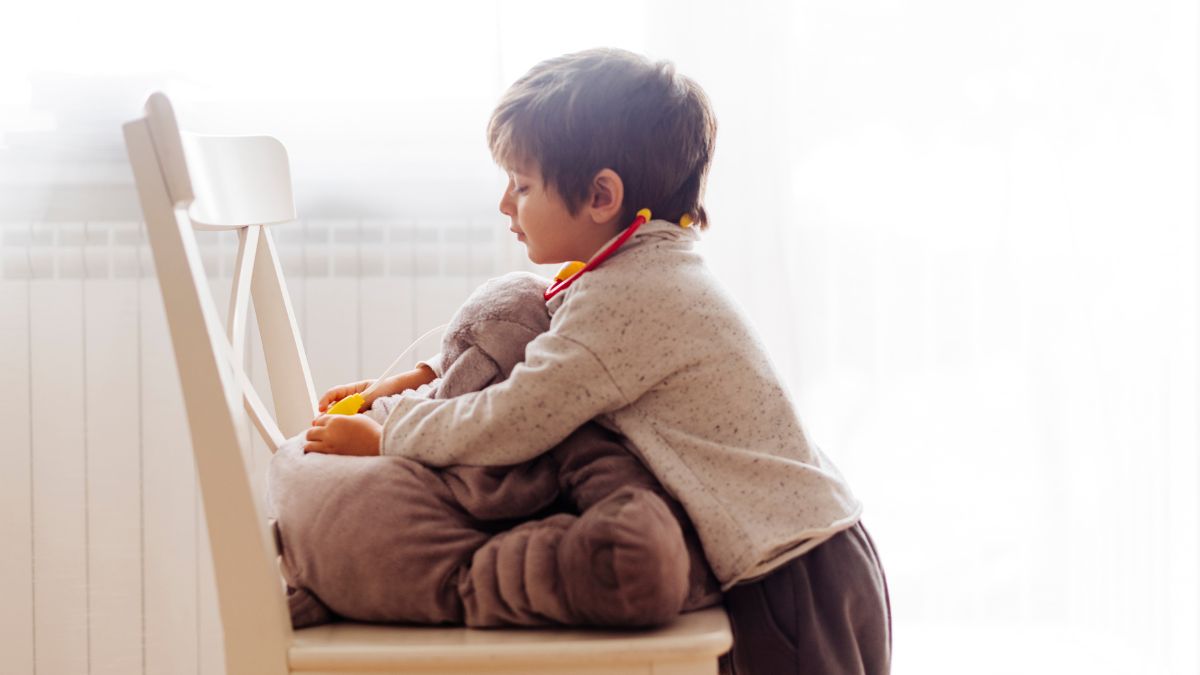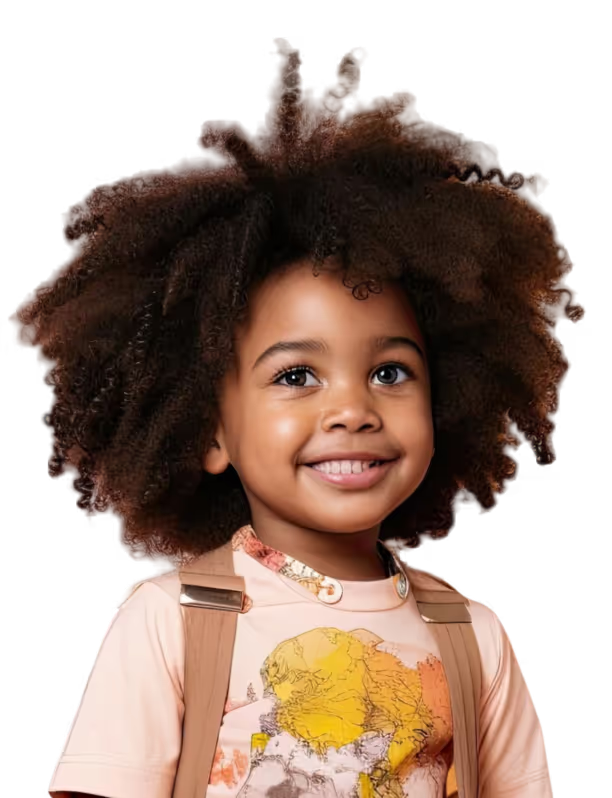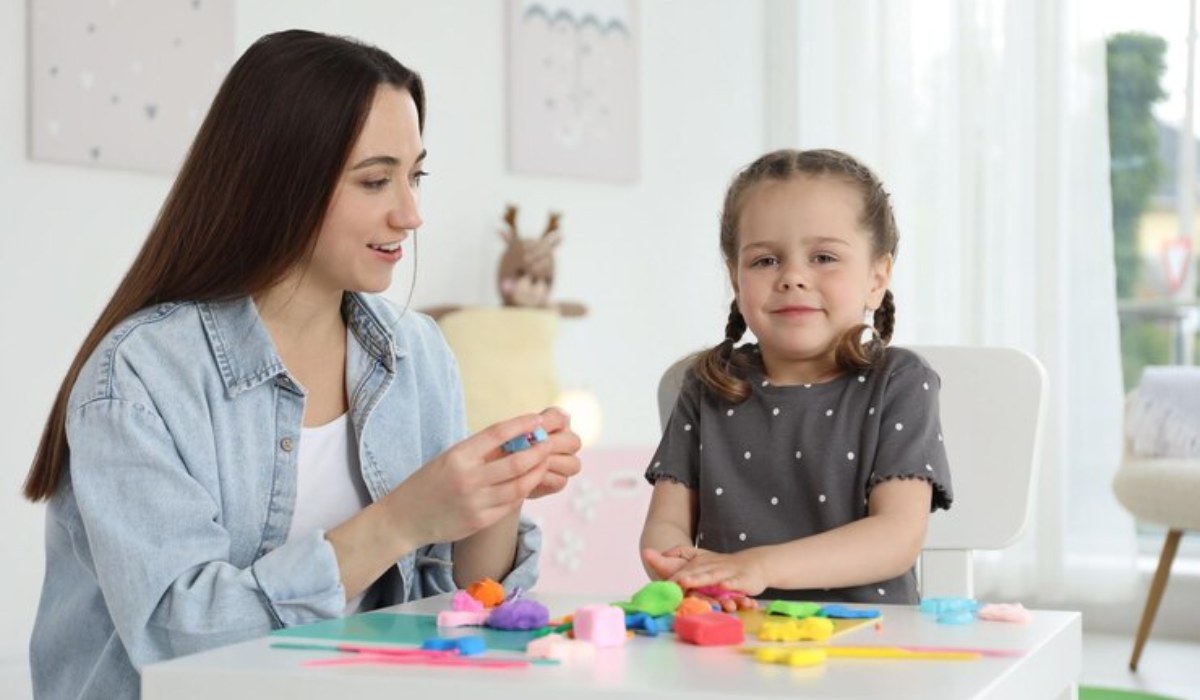Understanding Autism and Poor Social Skills in Children

Every parent wants their child to thrive socially, to make friends, share laughs, and join in play. But what if your child struggles to connect, misses social cues, or prefers being alone? That’s when understanding autism and poor social skills becomes essential. Autism doesn’t mean a child lacks emotion or care; it simply reflects a different way of seeing and processing the world. By learning how social skills develop differently in children with autism, parents and caregivers can build supportive environments that help each child shine.
What Does Autism Look Like in Social Situations?
.jpg)
Autism is not a one-size-fits-all condition. It’s a spectrum, which means each child experiences it differently. Some children may speak fluently but struggle with back-and-forth conversations. Others might avoid eye contact, prefer routines, or show intense focus on a favorite topic.
According to the Centers for Disease Control and Prevention (CDC, 2023), about 1 in 36 children in the U.S. has been identified with autism. Most parents notice signs before age three—though some may appear earlier or later depending on social environments and individual traits.
Children with autism often find it challenging to read social cues, understand facial expressions, or grasp the unwritten rules of conversation. These aren’t signs of rudeness—they’re signs of neurological difference.
How Autism Affects Social Understanding
Children with autism don’t lack social desire; they simply approach it differently. Understanding the “why” behind their social struggles helps caregivers respond with empathy rather than frustration.
1. Difficulty Reading Social Cues
Autistic children often interpret language literally. Sarcasm, teasing, or subtle expressions can be confusing. A statement like “Nice move! ” after a mistake might be taken at face value rather than as friendly banter.
2. Challenges with Eye Contact
Maintaining eye contact can be overwhelming due to sensory overload. It’s not a sign of disinterest—just a self-protective response to intense stimuli.
3. Repetitive Play or Rigid Routines
While some children enjoy imaginative group play, those with autism might prefer structured or repetitive activities. They find comfort in predictability, which can make spontaneous social interactions feel stressful.
4. Delayed or Limited Speech
Some children use fewer words or rely on gestures and visual support to communicate. Others might speak fluently but struggle with back-and-forth conversation, often steering topics toward their special interests.
According to a 2019 study in the Journal of Autism and Developmental Disorders, consistent social skills training improved communication and peer interaction among children with autism, highlighting that progress is always possible with the right strategies.
Autism and Poor Social Skills: Real-Life Examples
Let’s make it real. Here are relatable scenarios that show how autism poor social skills from autism appear in everyday life.
- Playground Conversations: A child may interrupt others or talk excessively about dinosaurs, unaware that peers have lost interest.
- Birthday Parties: Loud noises, flashing lights, or crowded rooms can be overwhelming. The child may retreat to a quiet corner rather than join the group.
- Group Games: Rules that change mid-game can cause confusion or frustration, leading the child to quit rather than adapt.
- Classroom Discussions: When asked a question, an autistic child might give detailed, factual answers instead of brief social ones—showing focus but missing the conversational flow.
Each behavior has meaning. Instead of labeling it as “rude” or “aloof,” understanding these responses as sensory or communication challenges opens the door to compassion and connection.
Signs Parents Should Watch For
Every child grows at their own pace. However, early signs of social difficulties may appear before age three. Recognizing them helps families seek evaluation and support early.
Common Early Indicators:
- Limited eye contact or response to name
- Preference for solitary play
- Repetitive movements (like flapping or rocking)
- Difficulty sharing joy or pointing to show interest
- Trouble understanding other people’s feelings
According to the National Institute of Mental Health (NIMH), early behavioral therapies can significantly improve communication and emotional recognition in children with autism—especially when started before kindergarten.
Why Social Interaction Can Feel Difficult
Imagine walking into a crowded room where everyone speaks a slightly different language. You understand some words but miss the tone or timing. That’s how many autistic children describe social settings.
Autism poor social skills aren’t caused by disinterest; they often come from sensory overload, anxiety, or difficulty interpreting social information. For example, loud noises, sudden changes, or unfamiliar faces can feel overwhelming, leading to withdrawal or repetitive behaviors for comfort.
According to a 2023 study from the Journal of Autism and Developmental Disorders, children who experience sensory sensitivities are more likely to show limited social engagement. Their brains prioritize managing sensory input over interpreting others’ behavior—making interaction draining rather than enjoyable.
Emerging Biological Insights and Therapies for Social Deficits in Autism
Social challenges lie at the heart of autism spectrum disorder (ASD), yet science continues to uncover the biological roots behind these difficulties. According to Frye (2018) in CNS Drugs, promising research points toward both neurochemical and microbiome-based interventions designed to improve social functioning in individuals with autism and poor social skills.
Key Findings from Recent Studies
- Social challenges are a defining feature of ASD, tied to atypical brain circuits that regulate communication, emotion, and reward processing.
- No FDA-approved drugs currently exist for core social impairments, although several experimental therapies are under clinical review.
- Oxytocin and propranolol have shown encouraging outcomes in improving empathy, social awareness, and emotional bonding.
- Vasopressin agonists and antagonists are being explored for their ability to regulate social behavior, though published evidence remains limited.
- Bumetanide, a diuretic, may help restore balance in brain signaling and has shown potential in improving communication and interaction.
- Microbiota transfer therapy (MTT)—reshaping gut bacteria—has revealed early success in enhancing both gastrointestinal and social functions.
- Balovaptan, developed by Roche, has received FDA Breakthrough Therapy Designation for its potential to treat core social deficits in ASD.
These discoveries show how understanding autism’s biological pathways could lead to science-backed solutions that directly address the root causes of poor social skills rather than just the surface behaviors.
How Do Autism Social Skills Compare with ADHD?
Comparing autism social skills with ADHD reveals important nuances in how each condition affects connection and communication. While both autism and ADHD can influence a child’s ability to form relationships, researchers from Research in Autism Spectrum Disorders (Cervantes et al., 2013) discovered that the nature of these social challenges differs in meaningful ways. Here’s what their findings show in simple terms:
- Both groups experience social impairments, but children with autism struggle more with adaptive social behaviors like making eye contact, saying thank you, or initiating conversations.
- Children with ADHD typically understand social norms better but often act impulsively or show inappropriate assertiveness.
- Autistic children displayed consistent social deficits across all ages studied (6–9 and 10–16), suggesting their challenges are stable over time rather than worsening.
- ADHD-related social issues tended to increase with age, especially in hostility and impulsive interactions.
- ASD-related social deficits stem from limited intuitive understanding of social cues, while ADHD challenges arise mainly from impulsivity rather than a lack of awareness.
Both groups benefit from targeted interventions, but the strategies differ: autistic children need help with social understanding, while children with ADHD benefit from impulse control and self-regulation training.
This comparison highlights that while both groups share social challenges, the underlying causes—and therefore the most effective supports—differ greatly. Recognizing these nuances allows caregivers, educators, and therapists to tailor approaches that truly fit each child’s needs.
Practical Ways to Support Social Growth
.jpg)
Social skills can be learned and strengthened over time with the right approach. Here are a few proven strategies:
1. Structured Play
Playtime builds communication naturally. Games like “Simon Says,” turn-taking board games, or building blocks encourage focus, imitation, and collaboration. Start small—short, guided sessions often work best.
2. Visual Supports
Charts, cue cards, and visual schedules help autistic children understand what’s expected. For instance, a visual chart showing “Say Hello → Ask Question → Wait for Reply” can simplify conversation steps.
3. Social Stories
Created by Carol Gray, social stories use simple narratives to explain situations like joining a game or greeting a friend. These help children practice social behavior in a predictable, stress-free way.
4. Model Behavior
Children learn best through observation. Model appropriate greetings, expressions, and reactions during daily interactions. Praise small improvements—it builds confidence.
5. Professional Therapy
Applied Behavior Analysis (ABA), occupational therapy, and speech therapy are among the most effective interventions. Each targets specific goals like social turn-taking, emotional regulation, or peer interaction.
The Role of Schools and Communities
School is often the first major social environment outside home. Teachers play a crucial role in supporting inclusion. Many schools now implement Individualized Education Programs (IEPs), which provide custom goals for social and academic growth.
Classroom strategies like “buddy systems,” visual instructions, and sensory-friendly corners create safe spaces for autistic learners. Communities can help too—by organizing sensory-friendly events, inclusive playgrounds, or small-group activities designed for neurodiverse children.
As the National Autistic Society (2023) highlights, children thrive in communities that understand them. Inclusion doesn’t just benefit autistic kids—it teaches empathy and patience among all students.
Technology and Social Learning
Modern tools can also enhance social learning. Apps like “Avaz AAC,” “Proloquo2Go,” or “Speech Blubs” use visual aids, games, and voice simulations to make communication easier. Virtual social simulations, guided by therapists, help children practice real-life conversations in safe, controlled environments.
Technology isn’t a replacement for human interaction—it’s a bridge. When used wisely, it helps children rehearse skills they’ll use in daily life.
When to Seek Professional Help
If your child continues to struggle with social cues despite support at home or school, it may be time for a professional evaluation. Pediatricians, developmental psychologists, or speech-language pathologists can assess your child’s communication, play, and emotional responses.
Early intervention is key. The National Institutes of Health (2024) reports that children who begin therapy before age five show stronger gains in language and social understanding than those who start later. Early support leads to lasting growth.
Frequently Asked Questions (FAQ)
1. Why does my child avoid eye contact?
It’s often a sensory reaction, not defiance. Some children find direct gaze overwhelming but still engage in other meaningful ways.
2. How can I help my child make friends?
Start with structured, calm playdates. Gradually introduce new peers while supporting communication with visual cues or role-playing.
3. Do poor social skills always mean autism?
Not necessarily. Some children may have language delays, anxiety, or ADHD. A comprehensive evaluation helps clarify the cause.
4. How can parents encourage social play at home?
Start with simple, structured games, model behavior, and celebrate every effort. Encourage short playdates with one familiar peer.
5. What resources are available for families?
Organizations like Autism Speaks, the Autism Society, and local therapy centers offer guidance, workshops, and community programs for support.
Building Connections That Last: A Hopeful Path for Every Child
.jpg)
Autism doesn’t take away a child’s potential; it reveals a new direction. By understanding autism and poor social skills with compassion, curiosity, and the right help from Achieve Better ABA, we help children connect not only with others but also with themselves. Every smile, small gesture, or shared moment matters—it’s real progress, and it’s beautiful.
Understanding autism poor social skills is more than a diagnosis; it’s an act of empathy. What happens when parents, teachers, and friends start seeing the world through an autistic child’s eyes? Confusion turns into kindness. With Achieve Better ABA, families in North Carolina can explore how small, steady steps can lead to lasting changes in connection and confidence.
Autism isn’t a limitation; it’s a unique way of experiencing life. With patience, care, and the right guidance, children on the spectrum can build friendships and live full, happy lives. Reach out to us today; let’s take that first step together.
Similar articles
Contact us today to learn more.

.jpg)

.jpg)
.jpg)
.jpg)
.jpg)





